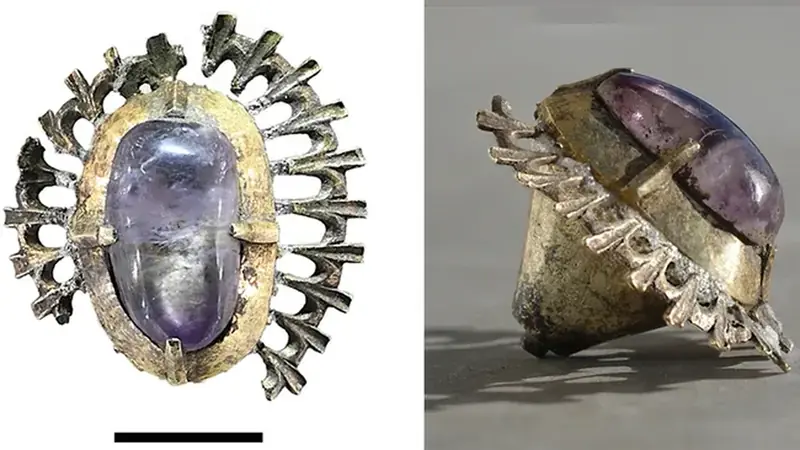
An amethyst set in high-quality gold-plated silver lay buried for about 600 years in the silt of an old ditch near Kolo Castle in the Opole Voivodeship of southwestern Poland.
Archaeologists speculate that at some point, an aristocrat visiting the medieval castle lost this exquisite piece of jewelry. The find was likely part of a brooch or perhaps even a crown (though that is less likely). This information was shared with Live Science by Lech Marek, an archaeologist from the University of Wrocław and the head of the research team. Regardless, he considers it a unique artifact.
While medieval jewelry is often discovered in treasures or tombs, this particular piece was found in a more “everyday” context, noted Marek and his colleague Beata Miazga in their report.
Kolo Castle was established in the early 13th century as a fortress and ducal palace, and it also served as a customs house controlling the transport of timber. The original owner, Duke Bolesław III of Brzeg, later sold Kolo to wealthy knights. In 1443, the castle was destroyed during the civil wars in Silesia. In 2010, Marek and his team began archaeological excavations at the castle ruins. Since then, they have uncovered numerous military artifacts, cavalry equipment, and ceramics dating back to the 14th and 15th centuries.
Using Raman spectroscopy (which determines the molecular composition of materials through laser bombardment), the scientists identified the stone as amethyst. Meanwhile, X-ray fluorescence analysis revealed that the metal components were made of gold-plated silver.
“Due to its symbolic significance, accessibility, and aesthetic qualities, amethysts were popular in the Middle Ages,” Marek noted. In those distant times, it was believed that amethysts could protect their owner from drunkenness, poison, gout, bad dreams, betrayal, deceit, captivity, blindness, witchcraft, and choking. They also symbolize modesty and faith.
“In the complex medieval game of symbols, the choice of gemstones for jewelry always had a profound reason. If a stone was believed to possess supernatural powers, its value quickly increased,” explained the research leader.
It remains unknown who lost this stone and how, but researchers have no doubt that it belonged to someone of high status. The findings were published in the journal Antiquity.
